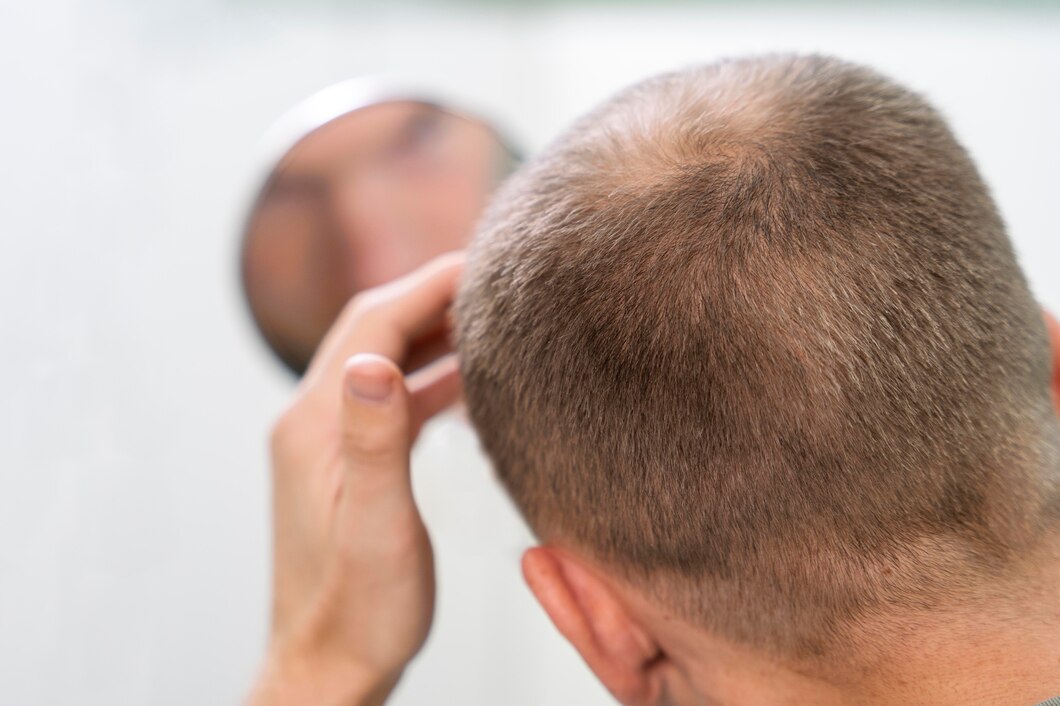Treatment of ringworm versicolor
Treatment of ringworm versicolor
Book Now
Treatment of ringworm versicolor
Tinea versicolor, also known as pityriasis versicolor, is a skin condition caused by an overgrowth of a naturally occurring yeast called Malassezia. This yeast is part of the skin's microbiota, a community of microscopic organisms that live on the surface of the skin. These organisms usually coexist harmlessly with the body's cells, providing protection from harmful pathogens. However, when the Malassezia yeast grows uncontrollably, it can disrupt the skin's natural pigmentation, leading to patches of skin that are either lighter or darker than the surrounding areas.
This condition is non-contagious and often becomes more noticeable in warmer, more humid weather. While it can be managed, treating tinea versicolor can take time. Even after the infection is eliminated, it may take several weeks or even months for the skin to return to its normal color.
What Causes Tinea Versicolor?
Tinea versicolor is caused by the overgrowth of the Malassezia fungus, which naturally resides in the skin’s pores. Certain environmental and biological factors can trigger an excessive proliferation of this fungus, leading to an imbalance in the skin’s microbiota. This overgrowth typically affects the skin’s pigmentation, causing uneven patches to form. Key factors that increase the risk of developing tinea versicolor include:
- Warm and Humid Weather: The fungus thrives in warm, moist environments, which is why outbreaks often occur during the summer.
- Oily Skin: People with naturally oily skin are more prone to this condition since the fungus feeds on oils.
- Weakened Immune System: Individuals with weakened immune systems, including those taking immunosuppressive medications or undergoing cancer treatments, are at higher risk.
- Excessive Sweating: Excessive sweating creates a more favorable environment for the yeast to thrive.
Symptoms of Tinea Versicolor
The most noticeable symptom of tinea versicolor is the appearance of flaky, discolored patches on the skin. These patches most commonly occur on areas like the arms, chest, neck, and back. The affected areas may be:
- Lighter or darker than the surrounding skin, with lighter patches being more common.
- Pink, red, tan, or brown in color, varying depending on skin tone.
- Dry and scaly, often accompanied by itching or slight irritation.
- Raised and rough to the touch, particularly in humid environments.
- The condition may disappear in cooler, less humid climates but can return when temperatures rise.
In individuals with darker skin tones, tinea versicolor may cause hypopigmentation, leading to lighter patches on the skin. In contrast, some individuals may experience hyperpigmentation, where the affected areas become darker than the surrounding skin.
Risk Factors for Tinea Versicolor
Several factors increase the likelihood of developing tinea versicolor. These include:
- Family History: A family history of tinea versicolor can increase susceptibility.
- Excessive Sweating: People who sweat heavily, either due to physical activity or climate, are at higher risk.
- Living in Warm, Humid Climates: The condition is more prevalent in tropical or subtropical regions.
- Weakened Immune System: Individuals with compromised immune systems are more likely to experience uncontrolled fungal growth.
- Use of Immunosuppressive Medications: Medications that weaken the immune system can contribute to fungal infections.
- Certain Cancers: Individuals with certain types of cancer may also be at increased risk.
Diagnosis of Tinea Versicolor
If you notice unusual discolored patches on your skin that persist despite at-home remedies, it’s advisable to consult a dermatologist. A physician can usually diagnose tinea versicolor by simply examining the affected areas. If the diagnosis is uncertain, the doctor may perform a skin scraping to collect cells for analysis. These samples can be viewed under a microscope to determine whether fungal yeast is present.
In some cases, a doctor may use a potassium hydroxide (KOH) test. During this procedure, a skin sample is placed on a microscope slide with a solution of KOH to look for fungal elements. Another option is using a Wood's lamp, a special ultraviolet light that causes areas affected by tinea versicolor to fluoresce yellow or green.
Treatment for Tinea Versicolor
Treatment for tinea versicolor involves antifungal medications to eliminate the fungal overgrowth. This can include topical antifungals such as creams, lotions, or shampoos that contain ingredients like clotrimazole, selenium sulfide, or ketoconazole. In more severe cases, oral antifungal medications may be prescribed.
While antifungal treatment can clear the infection, it may take time for the skin's natural color to return. Even after successful treatment, the discoloration may persist for weeks or months. Additionally, because tinea versicolor tends to recur, individuals may need to apply preventative treatments, especially during warm, humid weather.
Is Tinea Versicolor Contagious?
No, tinea versicolor is not contagious. The condition is caused by an overgrowth of a yeast that is already present on the skin, meaning it cannot be spread through physical contact or by sharing personal items.
Potential Complications of Tinea Versicolor
Untreated tinea versicolor can persist indefinitely, with the patches coming and going over time. Even with treatment, the condition often recurs, especially in warmer climates. After the fungal infection has been treated, the light or dark patches may take months to fade. Recurrence of the condition may require ongoing or periodic treatment to manage symptoms and prevent flare-ups.
In conclusion, while tinea versicolor is a non-contagious and generally harmless skin condition, its impact on appearance can be distressing. Timely diagnosis and appropriate treatment can help manage symptoms and restore the skin’s natural color.
Make an Appointment
The best way to enjoy a treatment at our salon is to book an appointment with the desired esthetician. Fill in the form below and we will contact you to discuss your appointment.